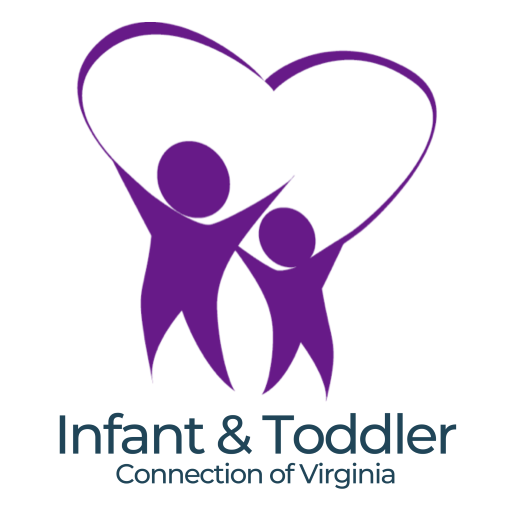
Getting Started in Early Intervention
The Infant & Toddler Connection of Virginia is implemented by local early intervention systems across the state. To get started, a child is referred to the local system in which he or she resides. From that point forward—although each family’s experiences are unique—the steps are in place to ensure that the process looks and feels familiar in every corner of the state.
Early Intervention Pathway
-
Your family’s journey within Virginia’s early intervention system begins with a referral to one of the forty local systems that together form the Infant & Toddler Connection of Virginia. Some families make their own referral to the local system. For other families, the referral is made by a physician or a hospital.
Depending on the size of the system, the first person you speak with might be an intake coordinator, a service coordinator—or even the manager for the entire local system! Whoever you speak to, she or he will know a lot about early intervention and be happy to answer your questions.
-
It’s very likely that you will schedule your first face-to-face appointment during your referral call. This first face-to-face appointment is called an intake appointment. Most often, the intake appointment will be held at your home (or another place of your choosing). The intake appointment provides an opportunity for you to learn more about the local early intervention system and for the system to learn more about your child and family.
-
Parents and caregivers have certain rights when they receive services provided by the Infant & Toddler Connection of Virginia. These rights are referred to as procedural safeguards. You will hear this term often—starting at the intake visit. While there are lots of forms to review, sign and date, and plenty of boxes to check and initial, these safeguards are in place to ensure that you—the child’s parent or caregiver—are kept fully involved and informed throughout your family’s time in early intervention.
-
Provided that you’ve given your permission, the local early intervention system will determine whether or not your child is eligible to receive early intervention supports and services in Virginia.
A child is eligible for early intervention if he or she is developing differently or more slowly than other children or has a health condition that will affect development. Your intake or service coordinator will gather the information and people needed to determine if your child is eligible. Early Intervention services are available for eligible children until their 3rd birthday.
-
If your child and family are eligible to receive services from the Infant & Toddler Connection of Virginia, your service coordinator and a team of professionals will conduct an assessment of your child to identify how she or he is functioning in a number of key developmental areas. This is called assessment for service planning, or ASP.
Using the information gathered during the assessment, the team—which includes you as the parent or caregiver—will then develop a plan based on your child’s needs and what’s important to you. You and your team will decide how everyone will work together to reach your family goals. This plan is called the Individualized Family Service Plan, or IFSP.
-
Once the IFSP is written and signed by you, one or more early intervention service providers will work with you to support your child’s ongoing development. When goals are met, new ones will be written to further your child’s progress. IFSPs are reviewed regularly—at least every 6 months—and can be updated as skills are acquired and/or your child’s needs evolve.
-
There will come a time when your child is no longer eligible for early intervention services—either because all IFSP goals are met and you no longer have concerns about your child’s development, or your child reaches his or her 3rd birthday. The Infant & Toddler Connection of Virginia will be with you and your family as you move from early intervention to whatever comes next. This process is called transition. In fact, planning for transition is so important, it’s included as part of the IFSP.
